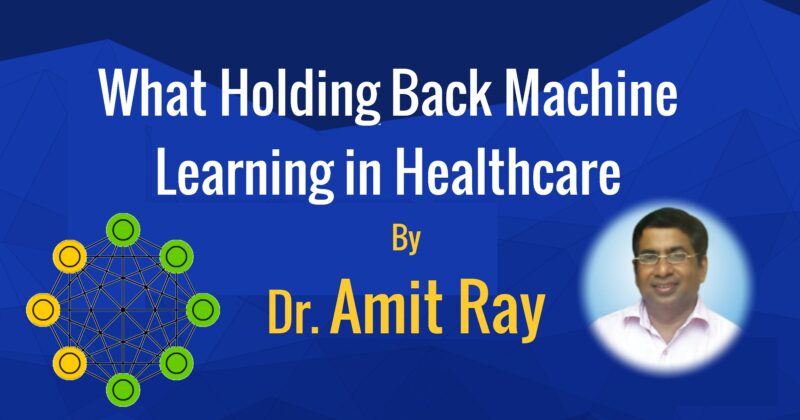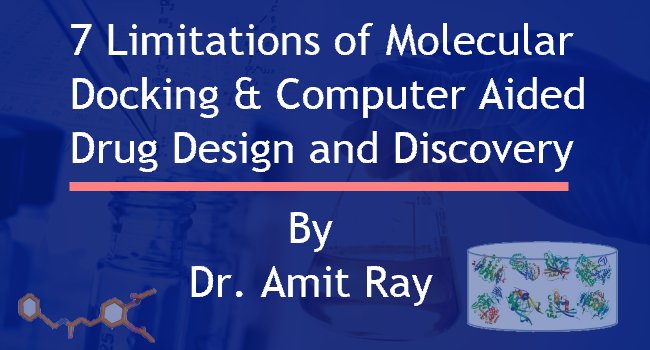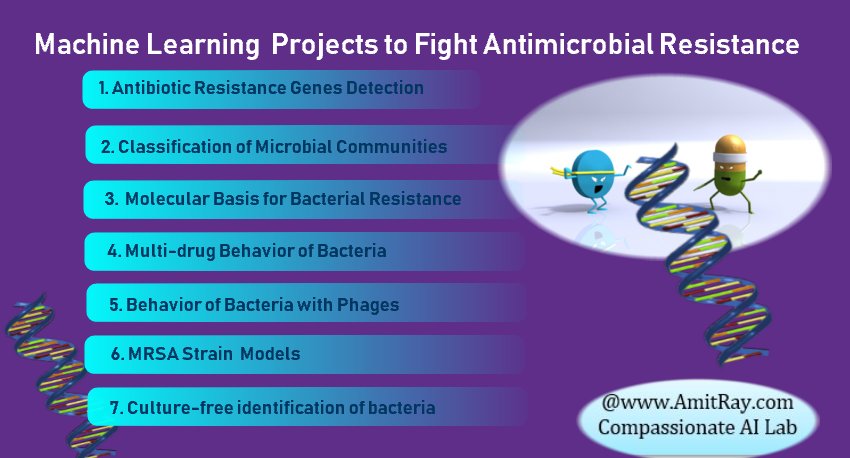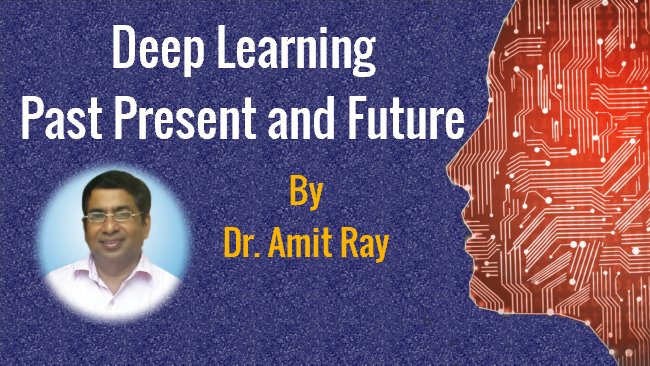AI in Healthcare
What’s Holding Back Machine Learning in Healthcare
What is holding back the large scale implementation of machine learning systems in healthcare and precision medicine? In this article Dr. Amit Ray, explains the key obstacles and challenges of implementing large-scale machine learning systems in healthcare. Dr. Ray argued that lack of deeper integration, incomplete understanding of the underlying molecular processes of disease it is intended to treat, may limit the progress of implementing large-scale machine learning based reliable systems in healthcare. Here, nine obstacles of present day machine learning systems in healthcare are discussed.

Machine Learning in Healthcare
Recently, machine learning algorithms, especially deep learning has shown impressive performance in many areas of medical science, especially in classifying imaging data in different clinical domains. In academic environment, Deep learning and Reinforcement learning methods of Artificial Intelligence (AI) has shown tremendous success in numerous clinical areas such as: Omics data integration (such as genomics, proteomics or metabolomics), prediction of drug-disease correlation based on gene expression, and finding combinations of drugs that should not be taken together. Deep learning is very successful in predicting cancer outcome based on tumour tissue images. Machine learning are used for medical decision support systems for ICU and critical care. Artificial Intelligence in Healthcare Current Trends discusses the current status of AI in healthcare. Read More »What’s Holding Back Machine Learning in Healthcare
Deep Learning Past Present and Future – A Systematic Review
7 Limitations of Molecular Docking & Computer Aided Drug Design and Discovery
7 Limitations of Molecular Docking & Computer Aided Drug Design and Discovery
Over the past decades, molecular docking has become an important element for drug design and discovery. Many novel computational drug design methods were developed to aid researchers in discovering promising drug candidates. In the recent years, with the rapid development of faster architectures of Graphics Processing Unit (GPU)-based clusters and better machine algorithms for high-level computations, much progress has been made in areas such as scoring functions, search methods and ligand-receptor interaction for living cells and other approaches for drug design and discovery.
A large number of successful applications have been reported using a variety of docking techniques. However, despite their success in academic environment for concept validation, their real life application is very limited. There are many obstacles and number of issues remain unsolved. In this article Dr. Amit Ray, explains the key obstacles and challenges of molecular docking methods for developing efficient computer aided drug design and discovery (CADD) methods. Dr. Ray argued incomplete understanding of the underlying molecular processes of the disease it is intended to treat may limit the progress of drug discovery. Here, the seven limitations of present CADD methods are discussed.

In vivo, In vitro and In silico: Experimentation for Drug Discovery
Experimentation for Drug Discovery pathways are classified into three groups: in vivo, in vitro and in silico. … Read more..
Navigation System for Blind People Using Artificial Intelligence
Do you know according to WHO, there are about 39 million people in the world who are blind? Artificial Intelligence is one of our key research area to overcome that challenge. Here, we explain the use of AI based grid cell, place cell and path integration strategies to solve the problems.
Dr. Amit Ray explains how grid cell, place cell and path integration strategies with artificial intelligence can be used for designing the navigation system for blind people. Here, we discuss the use of AI techniques for automatic navigation. Read More »Navigation System for Blind People Using Artificial Intelligence
- « Previous
- 1
- 2

